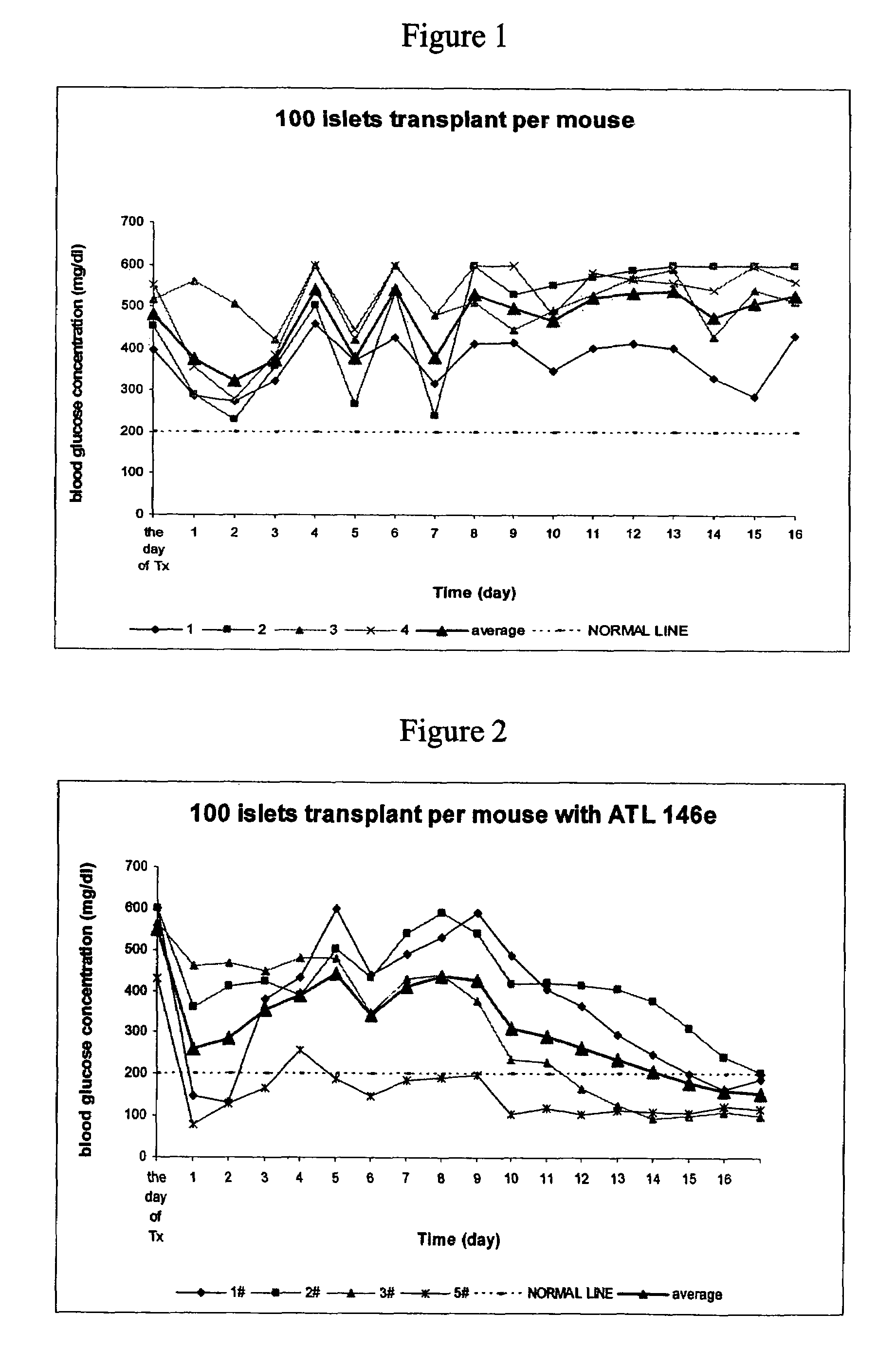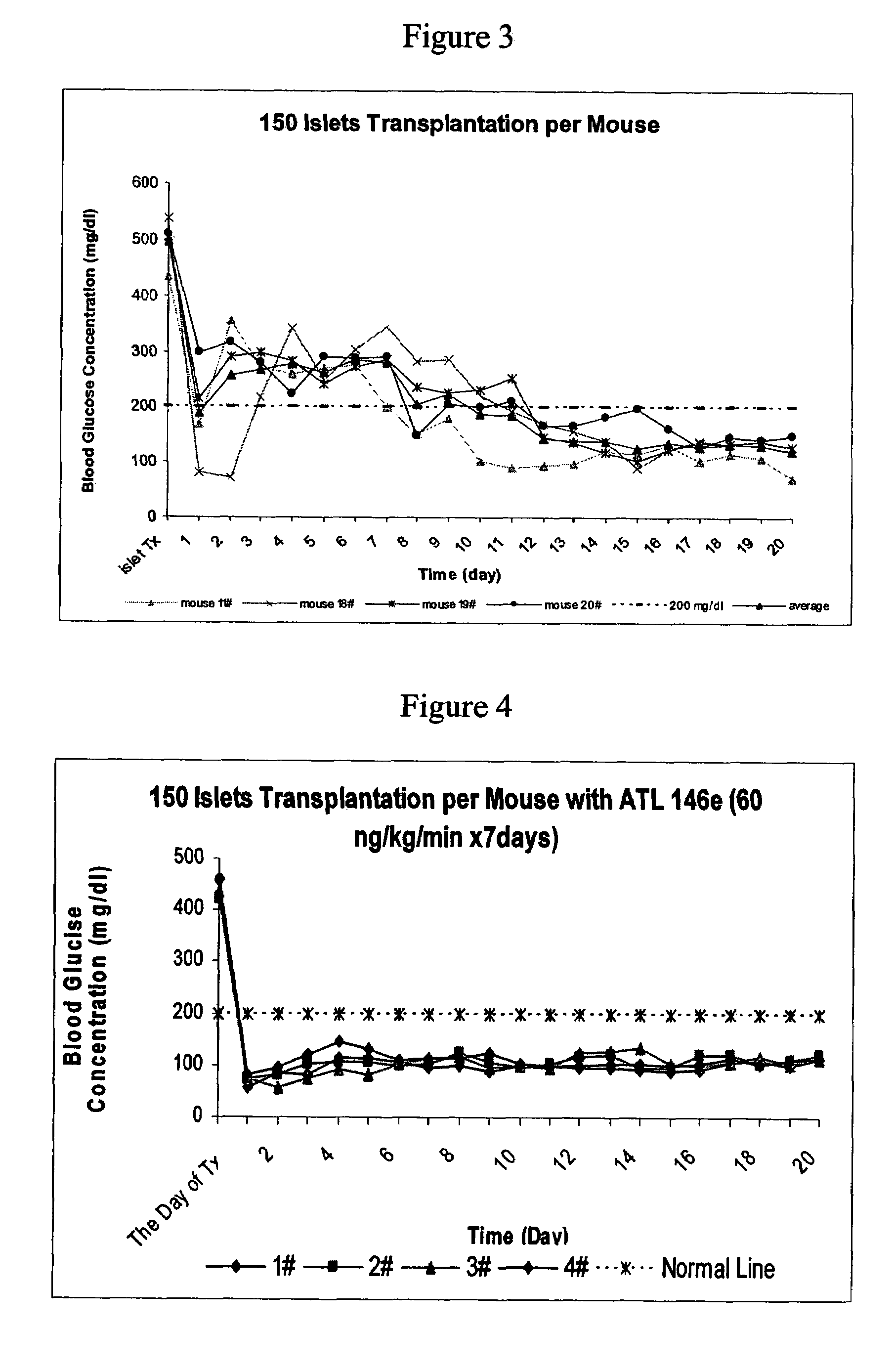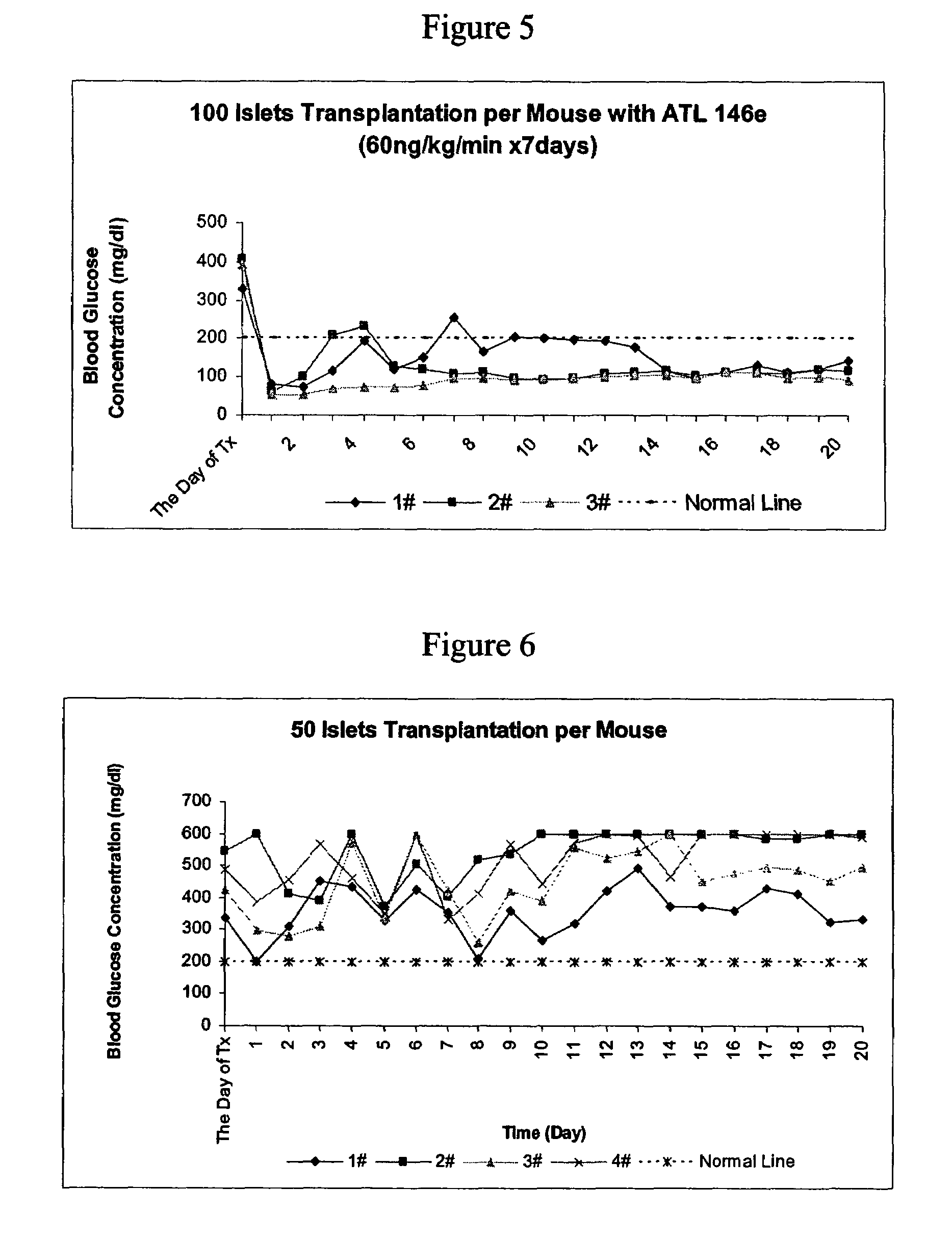Method to reduce inflammatory response in transplanted tissue
a transplanted tissue and inflammatory response technology, applied in the field of transplanted tissue inflammatory response reduction, can solve the problems of shortening the life expectancy by as much as one third, inappropriate injury to the host tissue, direct toxic effects on islets, etc., and achieve the effect of reducing inflammation caused immune responses and enhancing the effect of adenosine a2a agonists
- Summary
- Abstract
- Description
- Claims
- Application Information
AI Technical Summary
Benefits of technology
Problems solved by technology
Method used
Image
Examples
examples
Effects of A2AAR agonists in in vivo studies
[0308]The effects of A2AAR agonist, ATL146e were studied in a mouse islet transplant model. No mice in the control group were cured with 100 islets transplanted per mouse transplantation within 17 days after transplantation (See FIG. 1). In contrast, in ATL 146e treated group, (where ATL 146e was used at 10 ng / kg / min beginning with transplantation and lasting for 7 days, all mice were cured of diabetes within 17 days (See FIG. 2).
[0309]When the dose of A2AAR agonist, ATL 146e, was raised to 60 ng / kg / min and administered beginning 1 day before transplantation, diabetes was cured immediately with 150 islets transplanted per mouse (See FIG. 4). In contrast, without the A2AAR agonist compound, it took almost 2 weeks to achieve normoglycemia (See FIG. 3).
[0310]When the A2AAR agonist, ATL 146e (60 ng / kg / min), was administered 1 day before transplantation, diabetes was cured immediately with 100 islets per mouse (See FIG. 5). Compared to the prev...
PUM
| Property | Measurement | Unit |
|---|---|---|
| concentrations | aaaaa | aaaaa |
| time | aaaaa | aaaaa |
| composition | aaaaa | aaaaa |
Abstract
Description
Claims
Application Information
 Login to View More
Login to View More - R&D
- Intellectual Property
- Life Sciences
- Materials
- Tech Scout
- Unparalleled Data Quality
- Higher Quality Content
- 60% Fewer Hallucinations
Browse by: Latest US Patents, China's latest patents, Technical Efficacy Thesaurus, Application Domain, Technology Topic, Popular Technical Reports.
© 2025 PatSnap. All rights reserved.Legal|Privacy policy|Modern Slavery Act Transparency Statement|Sitemap|About US| Contact US: help@patsnap.com



